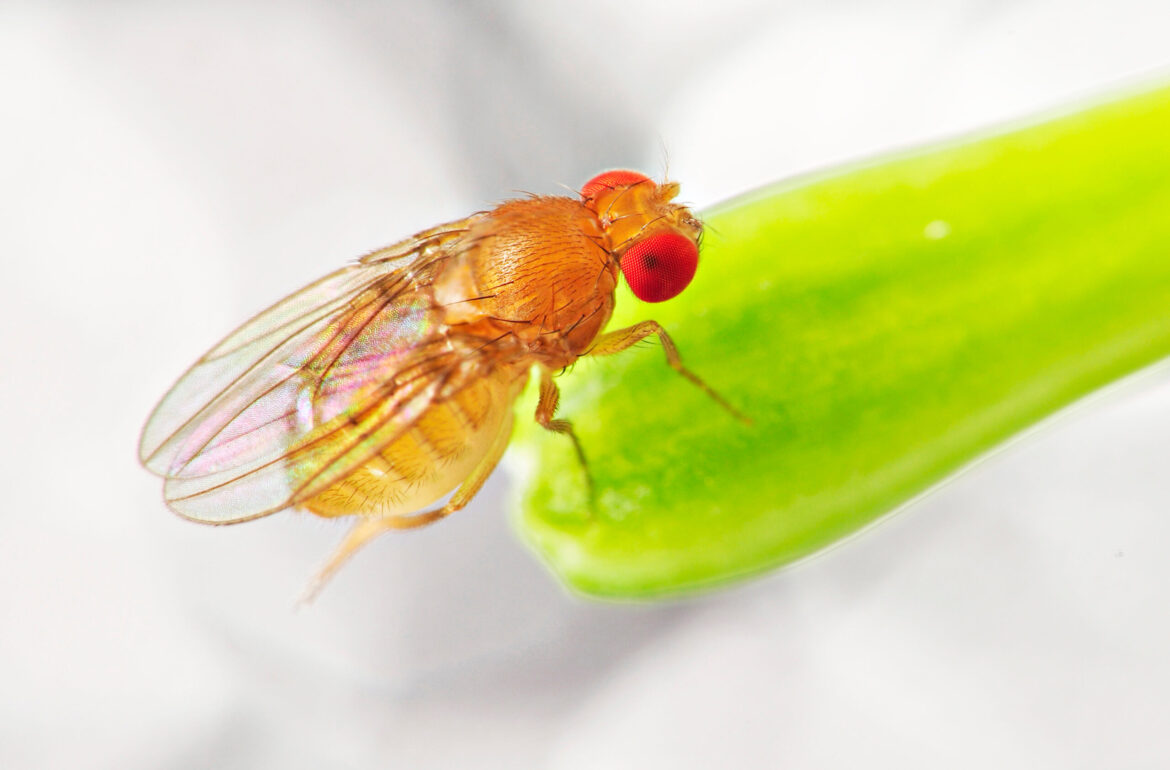Within her doctoral thesis defended at Tallinn University, Helen Poska tested the behaviour of proteins in the brains of fruit flies, and thus, offers input for future research into fighting diseases caused by the aggregation of misfolded proteins.
Proteins are large molecules with a countless number of different functional roles – for example, they give us energy and are also part of the building blocks of our bodies. For proteins to be able to complete the tasks entrusted to them, they must be folded correctly, i.e., they must achieve functional conformation.
Proteins as the danger and the help
When protein misfold, they can form aggregates. Various aggregates of misfolded proteins may accumulate in our bodies and therefore cause many diseases. For example, the accumulation of specific misfolded proteins in human brain tissue is considered to be one of the causes of neurodegenerative Alzheimer’s disease.
Luckily, the organism has its own defence army for fighting against the formation of harmful protein aggregates. This difficult but necessary work is done by molecular chaperones, which help target proteins obtain their native structure, help them in transportation and prevent aggregates’ formation. When chaperones do discover misfolded protein aggregates, they help in their degradation.
Therefore, chaperones are like the development coaches of the protein world that help keep to the goal in sight and help their client realise their potential and keep them on the right track.
It is the behaviour of chaperones in the organism that is at the focus of Helen Poska’s doctoral thesis that was recently defended at Tallinn University.
Experiments with flies
She conducted experiments on the fruit fly (Drosophila melanogaster) and established that all studied proteins (BRICHOS domains and the peptide Thioredoxin-80) reduced the deposition of misfolded proteins and improved the changes caused by them.
The lifespan of flies which received help from the chaperones increased and their ability in a simple climbing assay improved noticeably. It was also found that even though the structures of chaperones may be similar, they are not equal and may function in the organism in varying ways.
Finding new chaperones and studying their operating principles is a vital line of research. Increasing the capability of the army of helpers in the body may be one of the possible ways of affecting the progression of diseases caused by protein aggregation, such as Alzheimer’s disease.
In the future, this may also be the first step on the road to drug candidates against diseases that have hitherto been considered incurable.
Helen Poska’s doctoral thesis ‘In Vitro and In Vivo Studies of Molecular Chaperone Activity Against Fibrillar and Non-Fibrillar Protein Aggregation’ is available in the ETERA online environment of the Academic Library at Tallinn University.
The translation of this article from Estonian Public Broadcasting science news portal Novaator was funded by the European Regional Development Fund through Estonian Research Council.
 Back
Back



